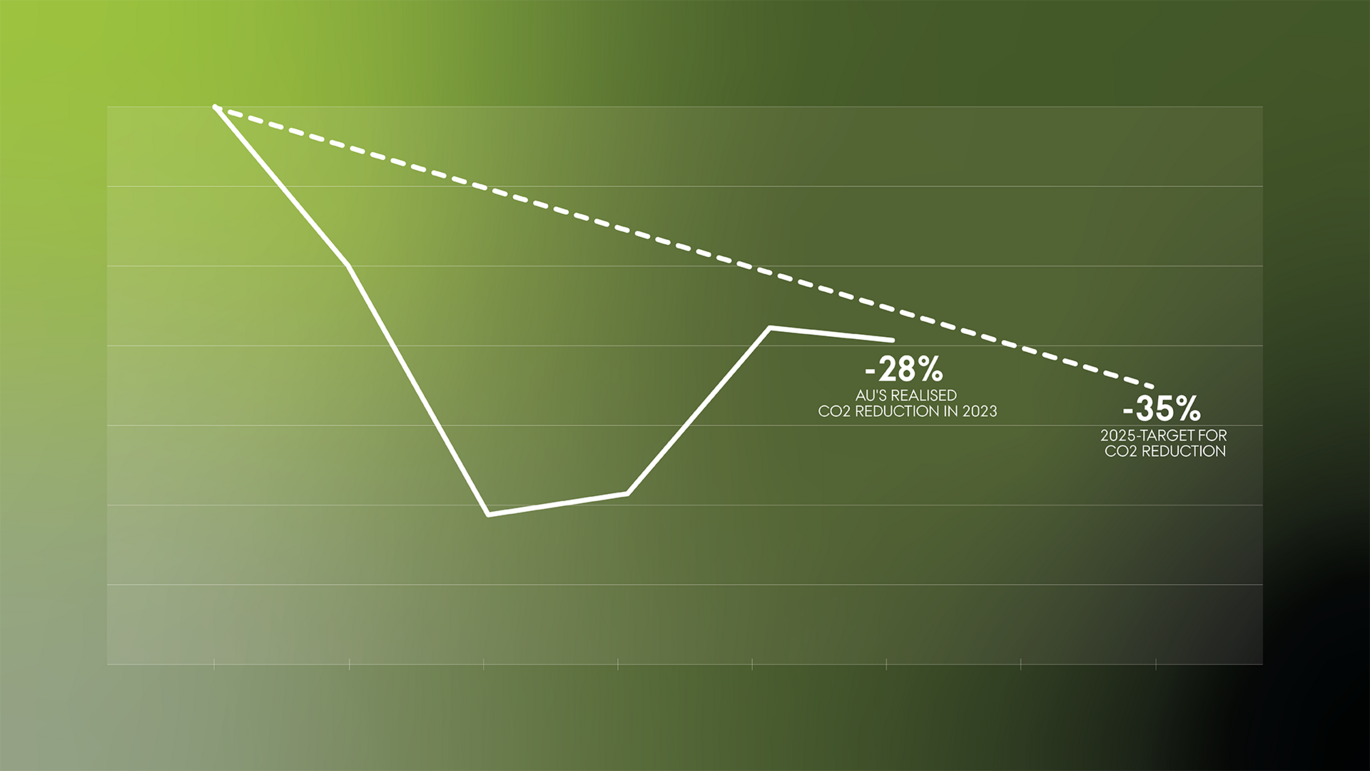Fall in CO2 emissions: “AU is on the right track but we need to keep the momentum”
By working together, the university has moved a little closer to its 2025 target of reducing CO2 emissions by 35 per cent compared with 2018. This is the main message of AU’s 2023 greenhouse gas emissions report. But we need to keep the momentum if we want to continue this success, says University Director Kristian Thorn.

There is cause for cautious optimism in the university’s 2023 greenhouse gas (GHG) emissions report, which shows that AU has managed to reduce its CO2 emissions for the first time since the Coronavirus lockdowns. Overall, AU’s CO2 emissions was reduced two per cent in 2023, and although this is a small reduction, it is an important step in the right direction.
Energy consumption on Campus is one of the driving forces behind the figures. The university has cut back on its heating and electricity use, and its electricity now comes from greener energy sources. It has also modified its agricultural and transport activities, which has helped bring down its CO2 emissions. University Director Kristian Thorn emphasises that these good results reflect the joint effort that has been made across the university.
“Staff and students deserve recognition for the efforts they’ve made to help bring down our energy consumption. We can achieve a lot if we work together, and we’ll need to do this over the next few years, both to keep up the good habits we’ve developed and to contribute to further reduction through our own behaviour – in relation to flights, for example. Across the university, I see a determination to cut back on air travel and embrace sustainable behaviour, even though this is often easier said than done. This is encouraging, and I hope that the positive figures in the GHG emissions report can help sustain our motivation,” says Kristian Thorn.
On the way to our 2025 target
AU has managed to reduce its CO2 footprint by 28 per cent compared with 2018. It now needs to bring this down by a further seven percent if it wants to meet the target set out in its climate strategy of reducing its CO2 footprint by 35 per cent by 2025.
“This won’t be easy. Our researchers are attracting more and more external funding, which is undoubtedly positive for our core tasks. But it also puts pressure on our ability to meet our climate targets. As a social institution, we have an obligation to reduce our climate footprint, so we need to keep our momentum over the next few years,” says Kristian Thorn, who highlights the initiatives in AU’s climate action plan, which are intended to help the university continue to reduce its CO2 emissions.
These initiatives include the ongoing process to reduce flight travel by collecting travel data at department and faculty level, strategies for sustainable procurement, and large-scale trials in the area of sustainable energy recovery.
Read more about AU’s 2024 climate initiatives.
Facts about this year’s greenhouse gas emissions report
- Aarhus University's annual GHG emissions report is based on the Greenhouse Gas Protocol (GHG Protocol), which is a recognised method of calculating emissions of greenhouse gases by converting them into CO2 equivalents divided into three scopes.
- For the third consecutive year, the climate accounts are based on two different methods: The activity-based method, whereby an activity (e.g. consumed power or air travel) is assigned an emission factor, and the financial reporting data-based method, whereby the number of kroner spent in a category is assigned an emission factor (e.g. amount for purchased IT hardware or chemicals).
- This year, the financial reporting data-based part of AU’s GHG emissions report was performed by KMD. In previous years, the Danish Centre for Environment and Energy was responsible for AU’s GHG emissions report.